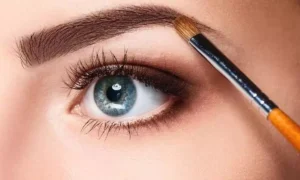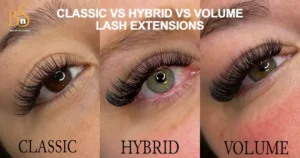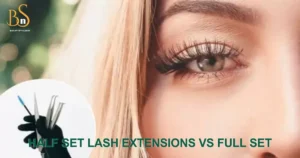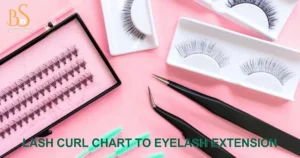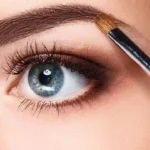Green lipstick is an eye-catching makeup trend that can take any look from boring to bold in an instant. For those seeking a naturally vibrant pop of color without harsh chemicals, making your green lipstick at home is an affordable and enjoyable process.
This guide will walk you through the simple steps to craft personalized green lipstick using only natural ingredients. You’ll understand lipstick formulation basics and have a one-of-a-kind shade you can’t find in stores.
What is Natural Lipstick?
Natural lipstick uses plant-based ingredients and avoids harsh chemicals, dyes, and preservatives. The goal is to nourish lips rather than damage them over time. A good natural formula will moisturize with ingredients like coconut oil, cacao butter, and beeswax while providing pigment from things like crushed berries, flowers, or clays. Some popular natural lipstick brands to consider include Ecco Bella, RMS Beauty, 100% Pure, and Josie Maran.
Making your own lets you control the ingredients down to the last detail. You can formulate a customized shade of green. The process also allows experimentation with different plant pigments and textures to discover your ideal formula. With just a few basic ingredients and some kitchen tools, you’ll be well on your way to creating a one-of-a-kind green lippie that’s free of questionable chemicals.
How to do Green Lips?
Selecting a green pigment or mixture of pigments to achieve your desired hue. Some natural options that produce vibrant tones include spinach powder, matcha powder, spirulina, and chlorophyll. You’ll need to experiment with ratios to land on your perfect shade of green.
To formulate the lipstick base, start with a fatty component like coconut oil or cocoa butter to moisturize on lips. Then mix in a hardening agent like beeswax so the finished product has a smooth lipstick-like texture. Finally, add essential oils like peppermint or lemon for scent and preservation.
Use a double boiler or bain marie set up to gently melt the base ingredients together. Slowly whisk in your green pigments until fully dispersed. Pour the hot liquid into lipstick tubes or molds and allow to set at room temperature.
How to Wear Green Lipstick?
Green lipstick makes a statement, so the key is balancing that bold pop of color. Stick to a simple look around the eyes and cheeks to let those lips shine. Sweep on neutral brown or taupe eyeshadow and lightly fill in brows.
A touch of blush high on the cheeks adds a healthy flush without competing with the lip color. As for your lips, exfoliate and moisturize well before applying to maximize the vibrant hue.
An easy daytime outfit could include a white tee, jeans, and sneakers to let the lips take center stage. For the night, pair your green pout with an LBD, statement earrings, and heels. Reds, oranges, and forest tones all complement emerald lips beautifully.
What Color Lipstick with Green Dress?
The goal with any colorful dress is the lipstick that complements without competing. When wearing a green dress, you have a few lipstick color options that pair beautifully:
| Lipstick Color | Description |
| Nude | Opt for a nude lip that acts as a neutral base, allowing the green dress to shine. |
| Pink | Pale pinks, rosy pinks, and berry tones all flatter a green dress. |
| Red | A true red lip is striking against an emerald or army green dress. |
| Plum | Deep plum or oxblood shades ground bolder green dresses. |
| Brown | On olive or forest green, a rich brown lip adds intrigue. |
How Do You Make Your Lipstick Color?
Experimenting with different natural pigments allows you to formulate countless custom lipstick shades. Here are some ideas to create unique green lipstick colors:
- Mint Green: Start with a light cocoa butter base and mix in matcha powder, spirulina, and a drop of peppermint essential oil.
- Forest Green: Use chlorophyll, spinach powder, and cocoa butter for a deep earthy tone.
- Shamrock Green: Blend spirulina, matcha, and a touch of blue chlorophyll powder for a classic Kelly green.
- Olive Green: Cacao butter, oregano powder, and thyme extract come together in an olive-toned military green.
- Pistachio Green: The base of coconut oil mixed with spirulina and crushed pistachio shells makes a delicate pale green.
- Camouflage Green: Experiment with layering thin coats of different green pigment mixtures for a multicolored print effect.
How Does Green Lipstick Work?
Green lipstick works in the same way as traditional lipsticks – by depositing pigment onto lips to change their appearance. The main components that allow it to do this are:
Pigment: Natural or synthetic colorants that provide the green hue. In natural lipstick, pigments come from plants like spinach, matcha, spirulina, etc.
Emollients: Oils like coconut oil or butter like cocoa butter and shea butter that keep lips soft and conditioned. They also help spread and blend the pigment smoothly.
Wax: Beeswax or candelilla wax forms the solid structure of the lipstick. During application, it melts from your body heat and leaves color on your lips as it rehardens.
Essential oils: Oils like peppermint, lemon, or rose offer a scent and help preserve the formula by preventing microbial growth.
When applied with a lip brush or directly from the bullet, the pigment particles adhere to the emollient/wax mixture on the lips. As you wear it, oils keep your skin hydrated under the long-lasting color layer. Reapplication throughout the day refreshes shine and pigment payoff.
How is Lipstick Color Made?
Whether store-bought or homemade, the basic process of making lipstick color is similar. Here are the key steps:
Select Pigments
Natural or synthetic dyes and mineral pigments provide the shade. Reds, oranges, and pinks come from plant and insect sources originally.
Melt the Wax
Beeswax, candelilla wax, or cocoa butter is used. These are emulsified and cooled to form a base.
Incorporate Oils
Coconut, olive, or jojoba oils condition lips. They also help spread pigment smoothly during application.
Whip in Air
Introducing air creates a creamy yet firm consistency that lipstick seeks. Agitation helps the formulation achieve an even color dispersion.
Add Preservatives
Vitamin E, rosemary extract, or optiphen help prevent microbial growth and extend the product’s usability.
Pour into Molds
The hot pigmented wax-oil mixture is carefully poured into tubes or molds and left to solidify.
Quality Testing
Lipsticks are tested for parameters like texture, shade accuracy, and preservation integrity before sale.
Package and Sell
Branding, labeling, and shipping finish the commercial process. But the principles remain the same whether it’s a small homemade batch or a mass-market product.
What are the Three Main Ingredients in Lipstick?
While lipstick formulas vary between brands, most contain some combination of the three main functional ingredients:
1. Pigments
Whether mineral-based or synthetic, pigments give lipstick its vibrant color. Common lipstick pigments include red and yellow iron oxides, cobalt violet, and ultramarine. Plant extracts like beets, flowers, and berries also provide natural hues.
2. Emollients
These moisturizing oils and fats condition lips and allow pigments to flow smoothly across the skin. Popular emollients include coconut, olive, palm, and jojoba oils as well as beeswax and candelilla wax.
3. Waxes
Waxes form the solid structure of lipstick and allow it to last throughout the day without reapplication. Common waxes include beeswax, candelilla wax, and carnauba wax. Hydrocarbon waxes like paraffin wax are sometimes used for their low cost.
Beyond these three pillars, additional components enhance lipstick’s performance and aesthetics:
- Preservatives like vitamin E prevent microbial growth.
- Flavor/fragrance adds scent and taste.
- UV filters protect pigment and skin from sun damage.
- Emollients like castor oil improve glide and pigment dispersion.
Final Thoughts
I hope you get interesting insights into lipstick formulation and inspire you to create your own unique green lip colors. Making lipstick is a fun, inexpensive way to customize beauty products using natural ingredients. But the learning doesn’t stop here continue experimenting fearlessly with various plant pigments, emollients, and formulations to develop your signature shades.
Natural lipsticks prioritize kind ingredients over harsh toxins. By understanding basic composition, you can feel empowered in choosing products in line with your values. Green lipstick may seem daring at first glance but know that experimenting with bold colors and DIY projects spreads more positivity in the world.

A seasoned beauty enthusiast, Rachel James has honed her craft in beauty style innovation over 7 years, blending artistry with precision to redefine beauty allure.

